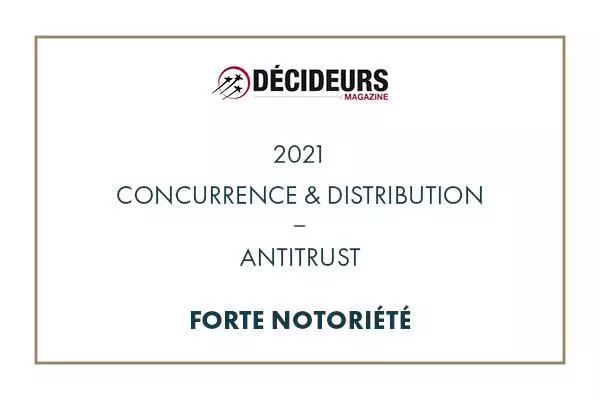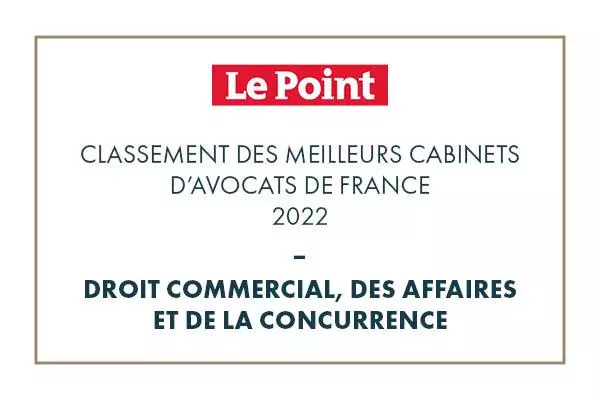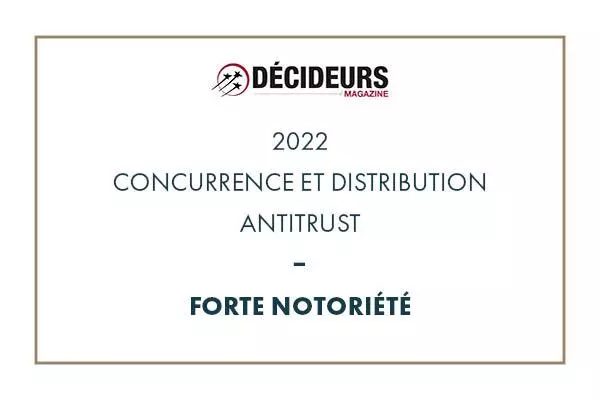Unfair competition: borrowing elements of a communication is protectable […]
31 May 2023
Paris Court of Appeal March 1, 2023 n°21/05308
This case illustrates, if not a limit, at least a strict condition of proof for any unfair competition action accusing a competitor of borrowing communication elements or even a website.
The facts were as follows:
Following the discovery in 2018 of a L’Oréal advertising spot launching a line of natural cosmetics, La Phocéenne de Cosmétique, which had been marketing a similar line under the name “Le Petit Olivier” since 2003, sued L’Oréal, complaining of a large number of borrowings which, in its view, constituted unfair competition.
Taking elements from two of its campaigns broadcast between 2011 and 2014, the plaintiff put forward no less than seven correspondences.
In her view, these correspondences were a repeat of the atmosphere, images and distinctive style of her “Petit Olivier” ads, creating confusion or at least an association between the two brands among consumers.
Let’s face it, the list was impressive.
As in its initial advertisements, L’Oréal’s communications included :
- A large olive tree in the middle of an olive grove filmed in the foreground;
- Then a shot of a young woman dressed in white with wavy medium-length chestnut hair in the midst of olive trees;
- The camera then focuses on his hand grasping an olive branch;
- Before moving up to her face as she sat on a rounded, wicker swing;
- The result is a range of beige products presented against a background of shady olive trees.
The La Phocéenne de cosmétique company reinforced these parallels with the general atmosphere of the spots (featuring a Moulinier in a sun-drenched setting) against a backdrop of soft music and voice-over.
She added that a cliché-by-cliché parallel had been clearly drawn by journalists from a specialist magazine (LSA), in an article highlighting the similarities.
The defendant, while not contesting the correspondence, denied that it had any particularity.
For her, these were common elements for cosmetics products (progressive plans for a female model, the core target) that include natural olive products in their composition (trees, field, cultivation site) and that are found in the communications of the majority of players in the sector (Palmolive, L’occitane, le Petit Marseillais).
The l’Oréal company insisted on the perfectly classic character of these southern landscapes for such promotions, which, it suggested, must not have escaped the plaintiff’s notice since since since 2014 it had abandoned exteriors to redirect its spots to decorated interiors (mas and bastide).
And this is the sense of the Court of Appeal’s solution (CA Paris, March 1st, 2023, RG n°21/05308).
Based on the principle of freedom of trade, the Court specified that the mere fact of marketing products identical or similar to those distributed by a competitor, which are not subject to intellectual property rights, does not constitute a fault.
Of course, she reminds us, maneuvers designed to create confusion in the mind of the consumer can be considered as such, but the unfairness must be characterized by the person complaining, and its seriousness must be demonstrated.
The Court then emphasized the plaintiff’s burden of proof:
” The assessment of fault with regard to the risk of confusion must be based on a concrete and detailed approach to the facts of the case, taking into account in particular the more or less slavish, systematic or repetitive nature of the reproduction or imitation, the length of time in use, and the originality and reputation of the copied service. “.
In this case, the Court considers that the covers relate to commonplace elements of such cosmetic products, whose compositional characteristics are similar and whose highlighting is a sort of obligatory promotional step.
For the Court, these elements are ” for the most part, the banal elements of an advertising campaign focused on the olive oil composition of cosmetic products, showing olive trees, olive harvesting, the benefits in terms of softness on the face and an image of the gentle way of life in the southern sunshine. “.
The Court noted that other secondary elements, such as the pressing mill or the presentation of the products on a neutral background in white letters, are once again involved in the composition and common in the advertising presentations of the market players (L’Occitane, Body Shop or Welleda).
In other words, the Court found that in its initial communications, La Phocéenne de Cosmétique had not developed a specific visual identity, drawing on the elements implied by its products to define an original image capable of preventing its use by competitors in the sector.
At l’Oréal’s invitation, the Court also noted the reorientation of La Phocéenne de cosmétique’s communications since 2014, which means that it cannot seriously articulate a risk of consumer confusion in 2018, when it has been presenting consumers with a distinct communications code for nearly 4 years.
And with an alert pen, the Court does not forget the journalistic argument, ruling that a case study of communication similarities in no way prejudges “the (judicial) demonstration of a risk of wrongful confusion likely to constitute an act of unfair competition“.
At the end of a concrete analysis, the Court therefore rejects, as did the first judges, any behavior contrary to the rules of fair competition.
It reminds us that the primacy of a communication does not necessarily mean that its codes are protected. And these must be, if not original, at least specific in that they are not implied by the nature of the products being promoted, and must always be relevant to the player claiming them.






